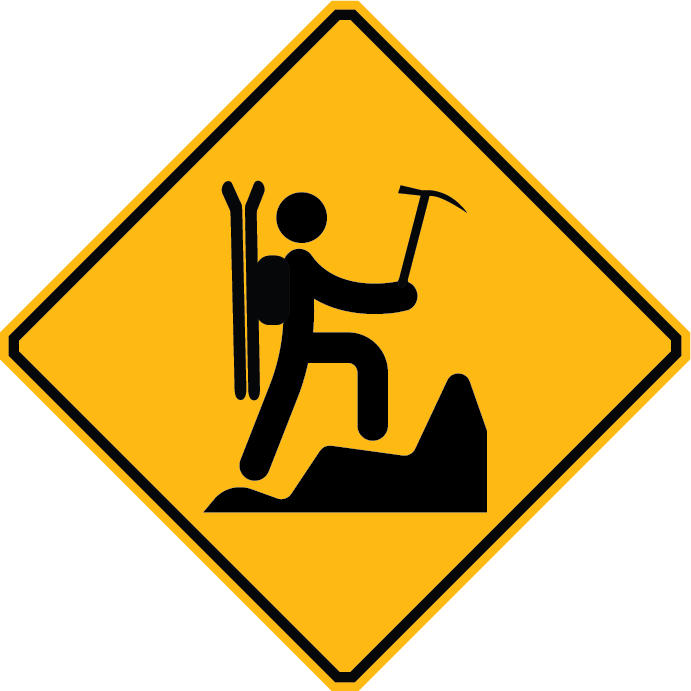Ruby Mountain 13,277'
Ruby Mountain from the east. Photo: Rob Writz
For the most part, this online guide describes Front Range peaks and routes that are on or east of the Continental Divide. Ruby Mountain is west of the divide in Summit County, but we cannot not ignore this gem of a peak, no pun intended. This red thirteener sits between Horseshoe Basin and Chihuahua Gulch, homes of some of the highest peaks on the Front Range. The view from the summit includes Grays Peak, Mount Edwards, the Continental Divide, and the mountains above Montezuma. The broad expanse on the East Bowl of Ruby gives the ski mountaineer several options to choose from. Hiding around the corner from the East Bowl is the shorter but steeper Northeast Face.
+ ROUTES
1 – East Bowl and Northeast Face
- Rating: II* D4, D6
- Season: Spring
- Exposure: Southeast, East, Northeast
- Vertical: 2,180'
- Approach Elevations: 11,097' - 13,277'
- Approach Distance: From Horseshoe Basin TH: 1.75 miles
The East Bowl (1a, D4) of Ruby Mountain is a wide face that has many different possibilities for ascending and descending. The steeper Northeast Face (1b, D6) is at the north end of the mountain’s wide summit ridge and above Falls Gulch. The summit is on the southern point of the ridge, and you can easily traverse the ridge to get great views into the bowl that allow you to choose your descent. The face in between the summit and the Northeast Face has several cornices to be aware of, and you can drop in cornice-free near summit. A ski descent of the Northeast Face may require you to traverse around steep rock outcroppings at the top to access the line.
In the late spring this is an easy approach from the Horseshoe Basin Trailhead, but the optimal skiing on Ruby’s East Face may not coincide with the opening of the road, and a long approach from the Peru Creek Road and Montezuma Road intersection might be required. Once you pass the summer trailhead, follow jeep road into Horseshoe Basin. You begin to catch glimpses of the East Bowl as you proceed north. Take note of the steeper terrain below the bowl that leads to the jeep road, you may be skiing through this on the way down. The path of least resistance is to get to the point where the road breaks east to the National Treasury Mine, about a ½ mile from the summer trailhead. Follow the drainage southeast into the basin below the East Bowl. To reach the Northeast Face, continue up Horseshoe Basin another ½ mile and then navigate steeper terrain near the Paymaster Mine to access Falls Gulch.
*This is a Grade III route if you are skiing or hiking in from the Peru Creek Road and Montezuma Road intersection.
+ TRAILHEAD
Horseshoe Basin Trailhead (11,097’)
The Horseshoe Basin Trailhead is located far up the Peru Creek Valley. This trailhead does not open until late spring or early summer, and it is a long ski in from the winter closure at the intersection of Montezuma Road and Peru Creek Road. Drive the Montezuma Road about 4.5 miles from its start at Loveland Pass Road (Highway 6) and the Keystone ski area to the intersection with the Peru Creek Road. If you arrive at the town of Montezuma you went too far. Turn around and go back down the hill and look right. Drive up the Peru Creek Road another 4.5 miles to the Horseshoe Basin Trailhead and where the road is closed in the summer.
+ MAPS & PICTURES
Below we have included a link to a Google interactive map and a curated list of photos of the mountain.





